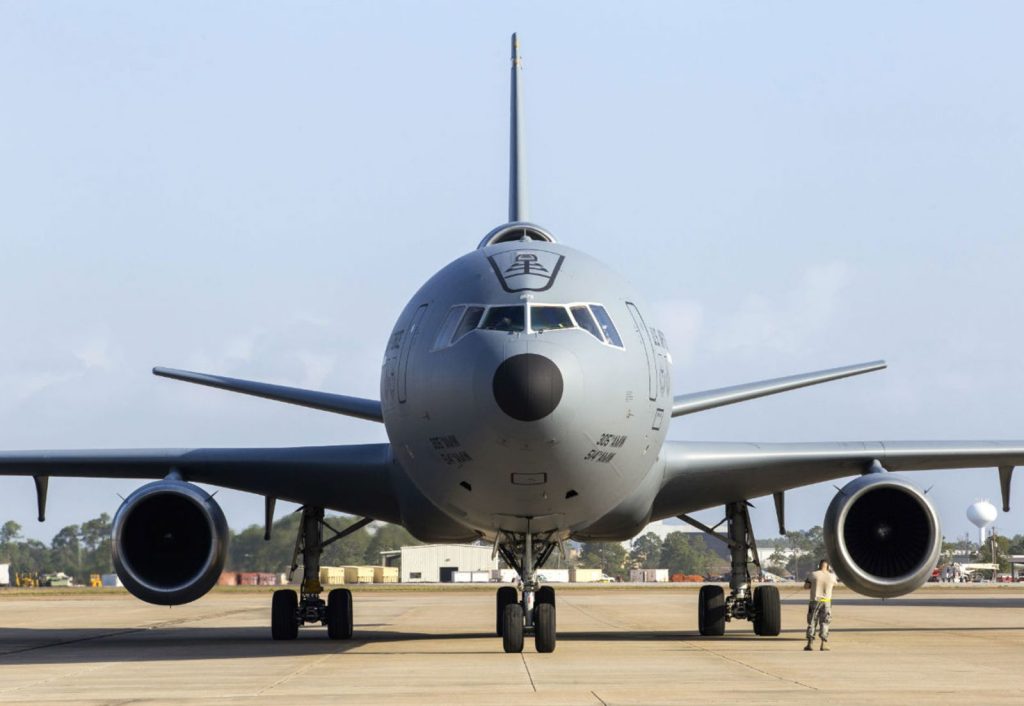The McDonnell Douglas KC-10 Extender is the US Air Force’s one of the tanker aircraft that is used for aerial refueling. It is a military upgrade to the commercial airliner named DC-10that was developed under the US Army’s Advanced Tanker Cargo Aircraft Program.
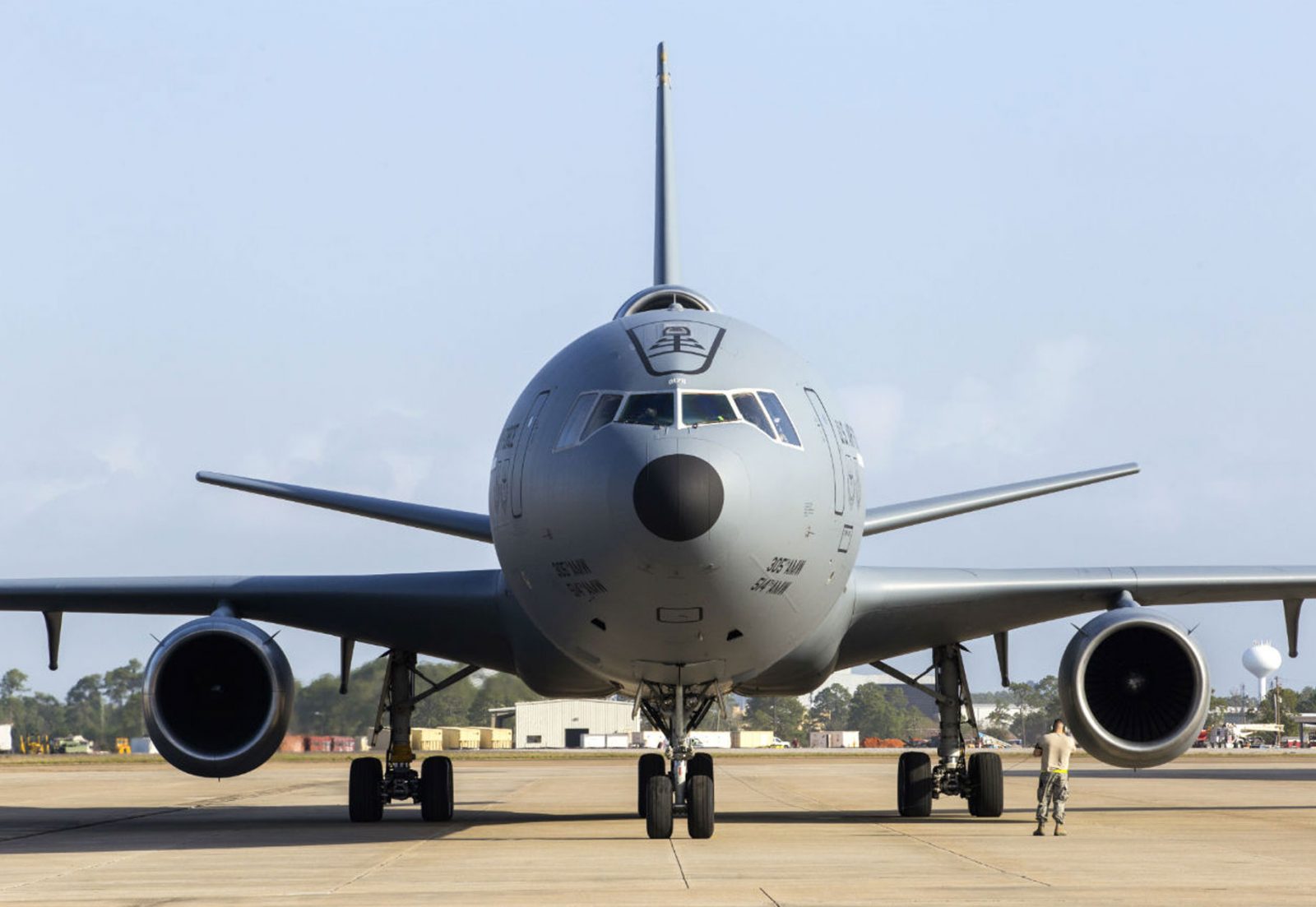
The aircraft has been equipped with a wide range of military-specific instruments to allow the aircraft to service its primary mission objective of aerial refueling and transport. The McDonnell Douglas KC-10 Extender is the only other McDonnell Douglas aerial refueling aircraft other than the C-9 to have been entered in the service of USAF. It was initially built in order to supplement the missions of KC-135.

USAF air Force ordered nearly 60 of these McDonnell Douglas KC-10 Extenders while 2 of them under the designation KDC-10 are in the service of the Royal Netherlands Air Force.
The main advantage of the McDonnell Douglas KC-10 Extender is its ability to keep the military aircraft and other assets mobilized during their missions overseas. The notable conflicts in which the McDonnell Douglas KC-10 Extender carried out missions of airlifting and aerial refueling are as follows.
- 1986’s Bombing of Libya for mission titled Operation Eldorado Canyon
- Gulf War in between 1990 to 1991; the Operation Desert Storm and Operation Desert Shield in Iraq
- War in Afghanistan; Mission Enduring Freedom
- War in Iraq; Operation New Dawn and Iraqi Freedom

This durable and the agile aircraft is well equipped with the latest upgrades and timely maintenance that allows it to serve the USAF until the year 2043.
For our readers today, we bring to you a list of amazing fats about the McDonnell Douglas KC-10 Extender.
History of Service
The design of the McDonnell Douglas KC-10 Extender is based on the airframe of the McDonnell Douglas’s DC-10 which is an aircraft that is a little extra large and even more robust when compared with KC-135. The aircraft was also equipped to have the special aerodynamic characteristics that allowed the aircraft to take on the mantle of being a crucial aerial refueling aircraft for the US Air Force.
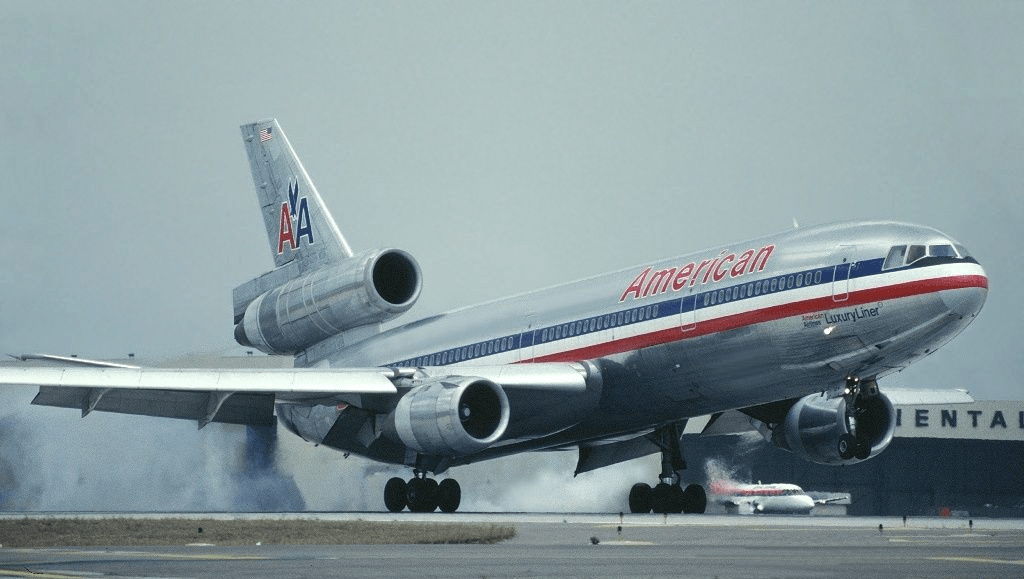
The process of aerial refueling is carried out with the refueling aircraft being in the lead and the aircraft in need of the fuel flying behind the lead aircraft. In this scenario the turbulent wake from the refueling aircraft can often result in disastrous results for the aircraft behind that can lead to loss of control or even worse a collision or a crash.
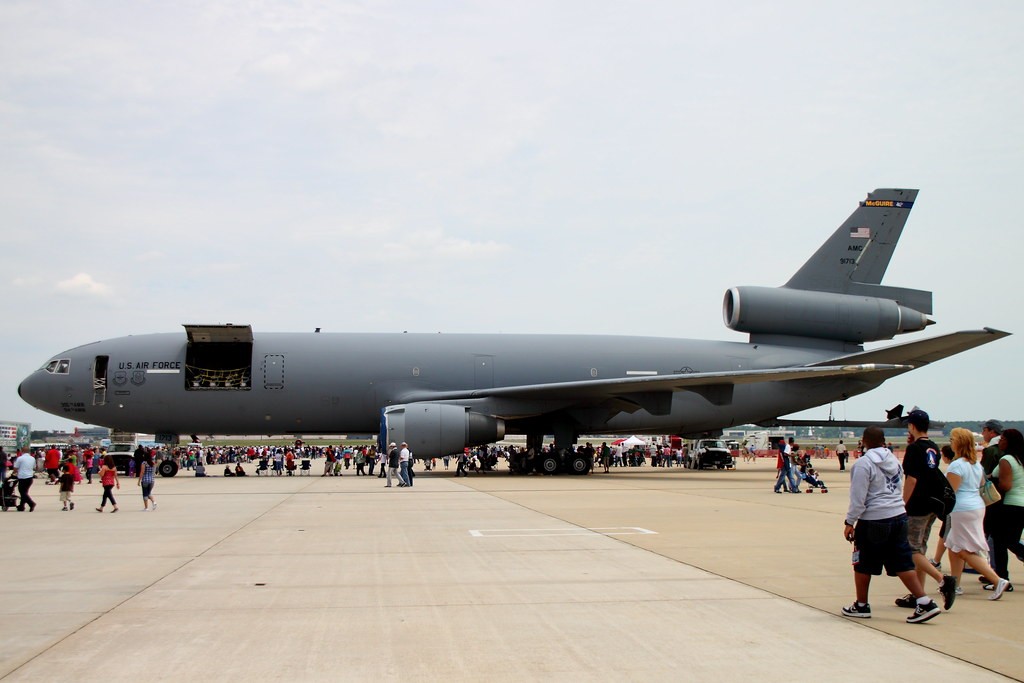
However during eh initial testing of the McDonnell Douglas’s DC-10 held back in 1972 at the Edwards Air Force Base, one personnel found that this aircraft had a splendid wake that was stable. After finding out this fact about DC-10, its upgrading started to make it an aerial refueling aircraft for military purposes.
The transition from an airliner to become a Military asset

The McDonnell Douglas KC-10 Extender is based on the airframe of DC-10’s own variant named DC-10-30CF. After getting approval for turning it into an aerial refueling aircraft under the Advanced Tanker Cargo Aircraft Program, all the parts of this airliner were removed to replace with military-grade features for its new mission roles.
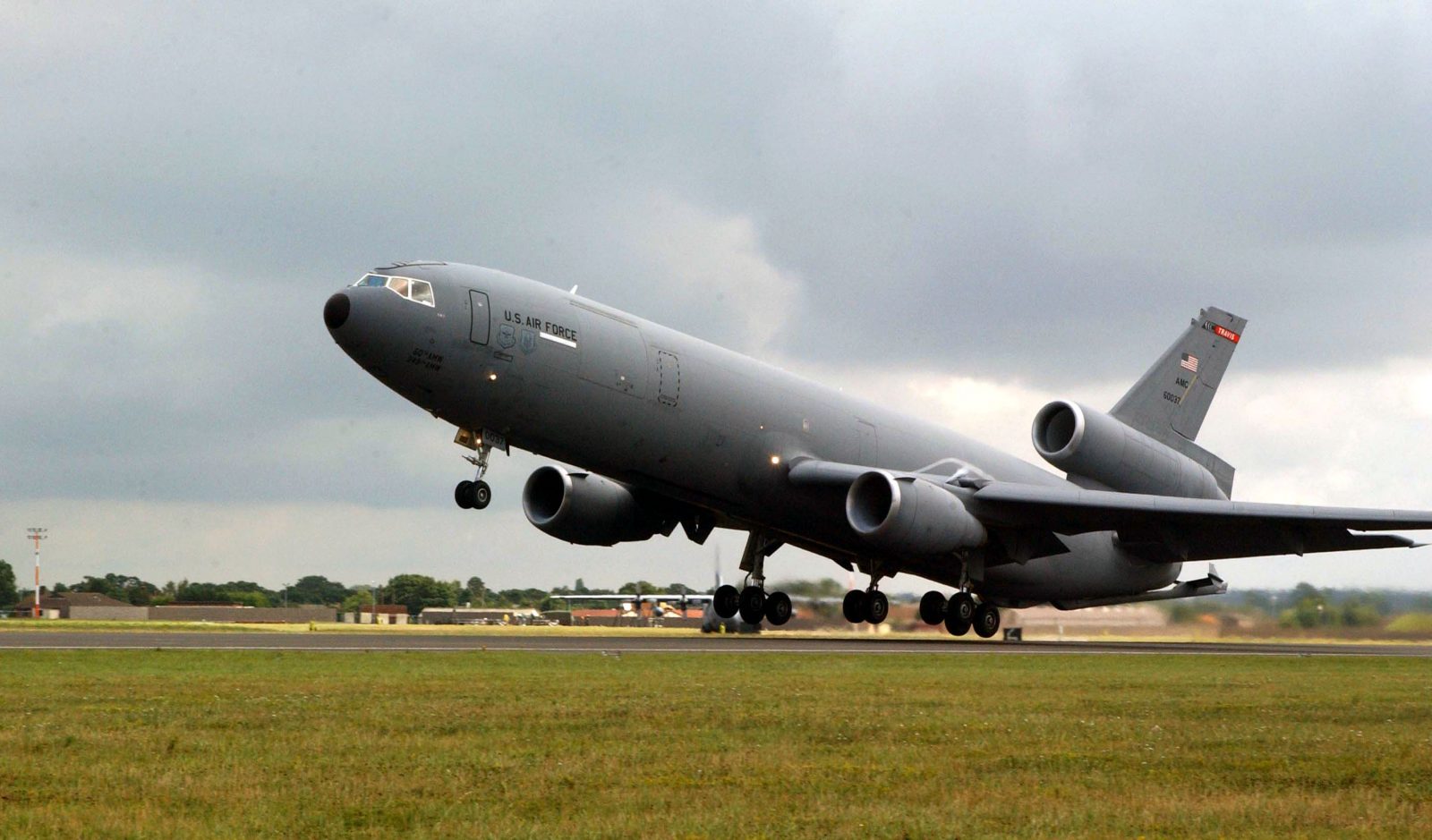
The main changes that were made in this DC-10 variant, to serve its military roles, were as follows.
- An improved cargo handling system
- Military’s state of the art avionics
- Removal of the many windows on the body of the aircraft
- A wider and larger cargo door
Still, despite having turned into a military asset, the aircraft still was able to retain 88 percent of its core systems as well as its airframe with its original commercial product.
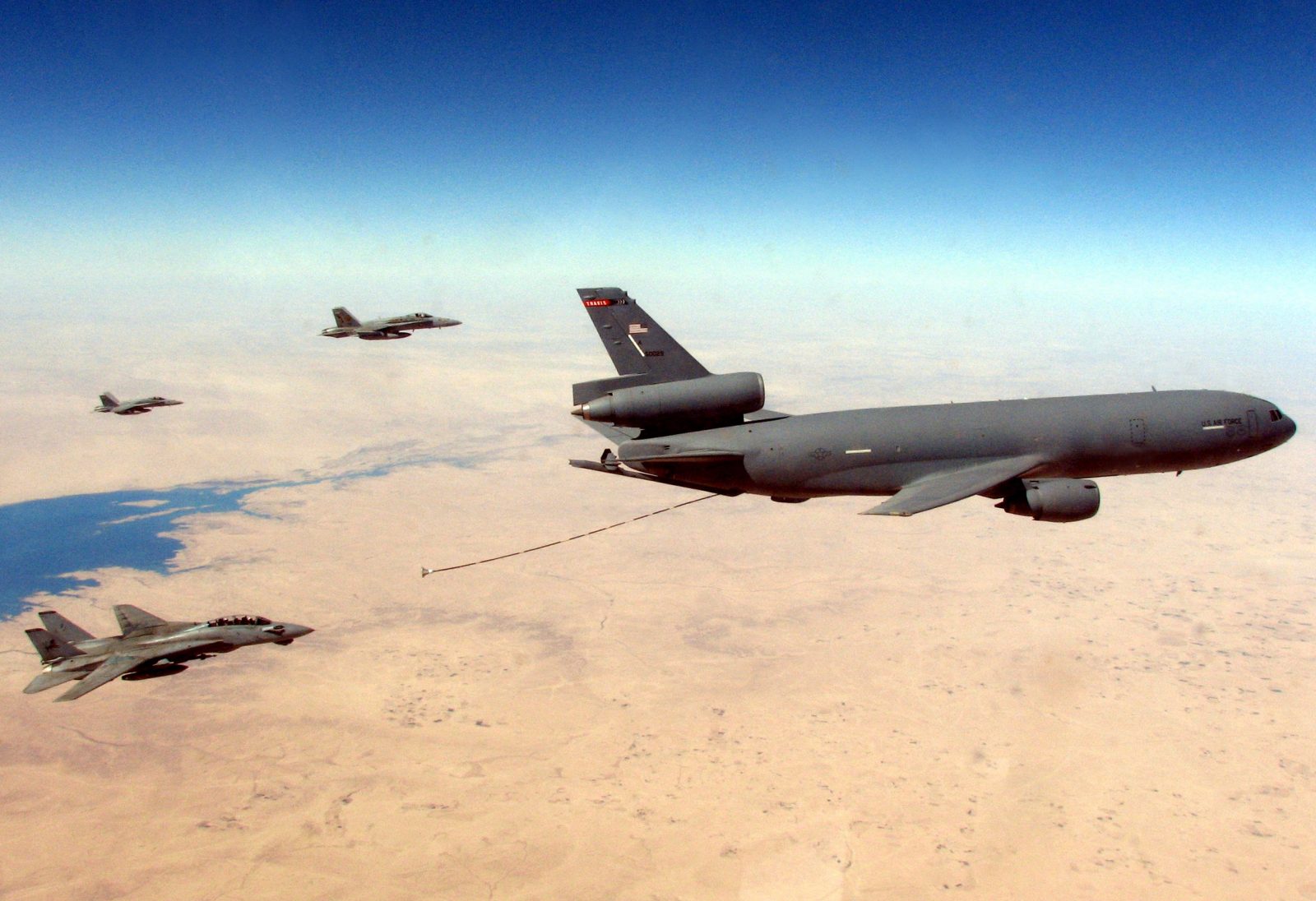
This allows the DC-10 to serve the commercial services while making use of the commercial support systems across the globe. In addition to this, having the near same specs in its design and core systems as its commercial one, it allowed the USAF to save considerable sum of money on its maintenance.
Aerial refueling
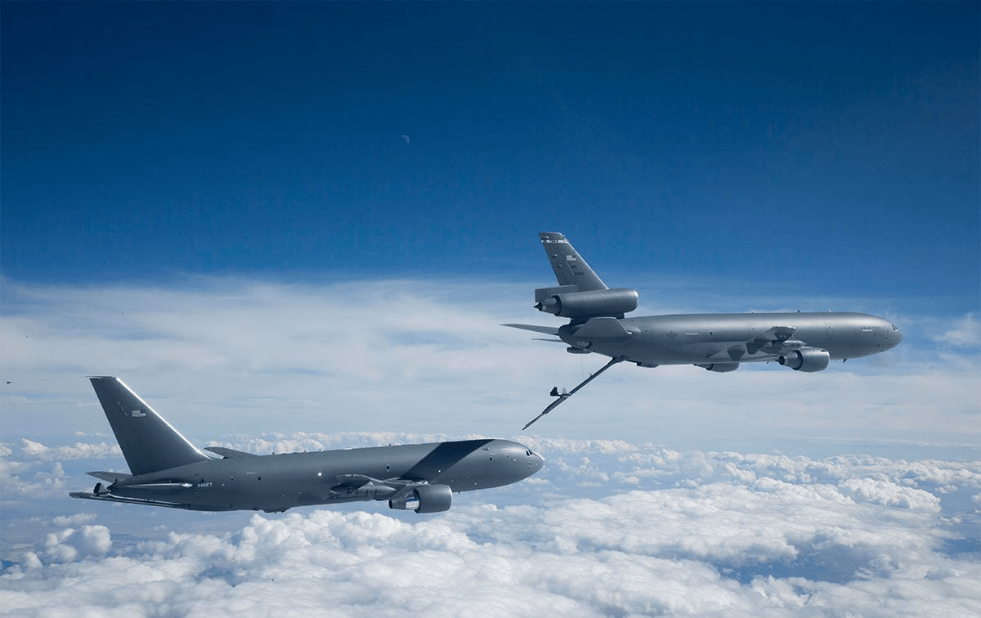
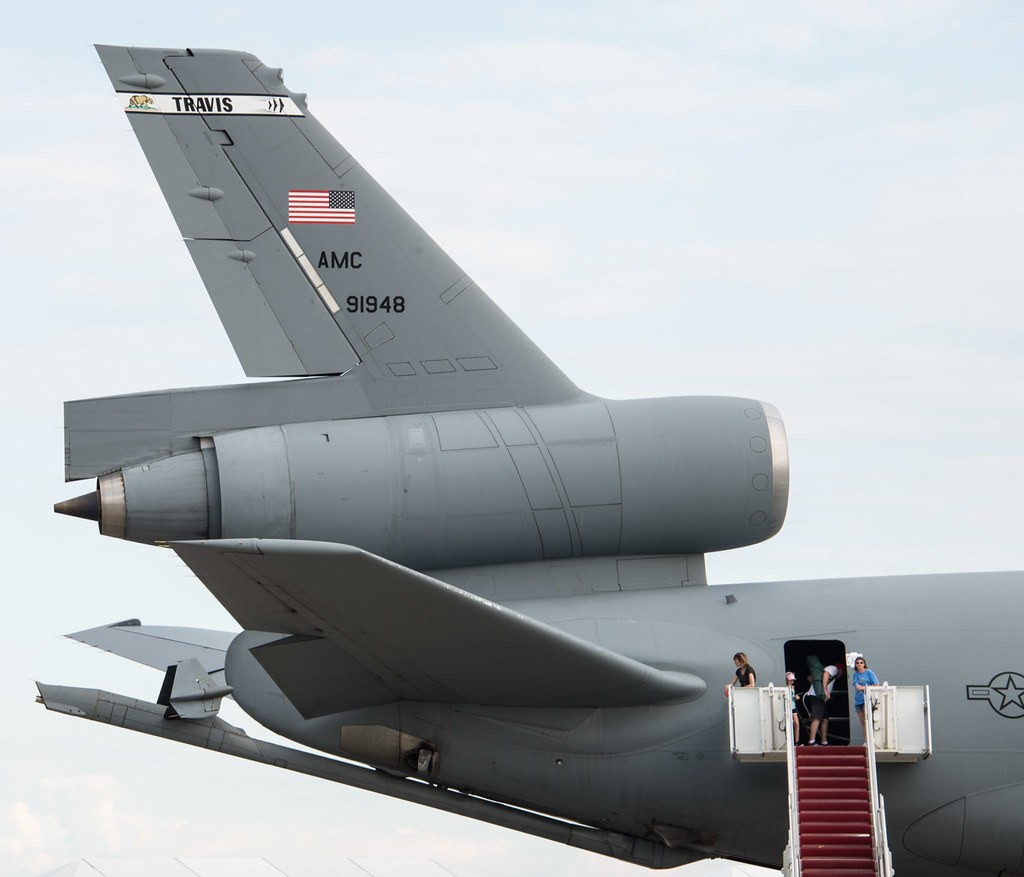
The main mission role at the end of the day for a McDonnell Douglas KC-10 Extender is to refuel the US and its allied nations’ aircraft and the major changes that were made in the DC-10 were to give the aircraft this aforementioned ability.
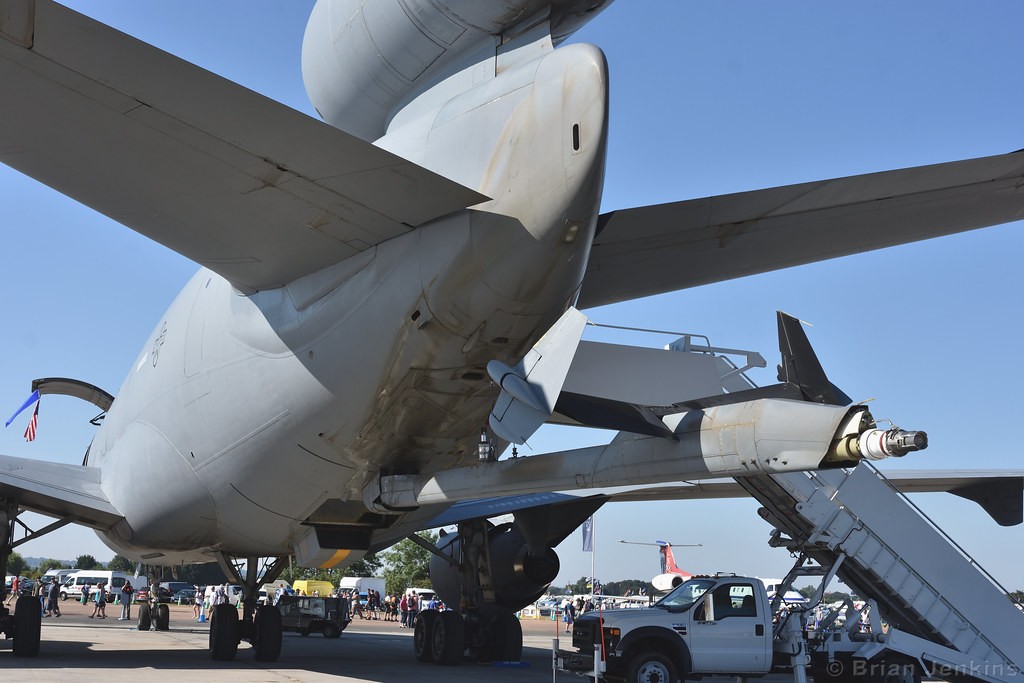
The storage tanks for fuel were placed right under the main deck where previously the aircraft had the baggage compartments. As for the whole refueling process form the KC-10 to an aircraft in need of fuel; the engineers of McDonnell Douglas installed the aircraft with an AARB (Advanced Aerial Refueling Boom). This boom has been installed in the rear side of the aircraft in order to make the refueling process smother, safer and accurate by controlling it with help of a control panel.
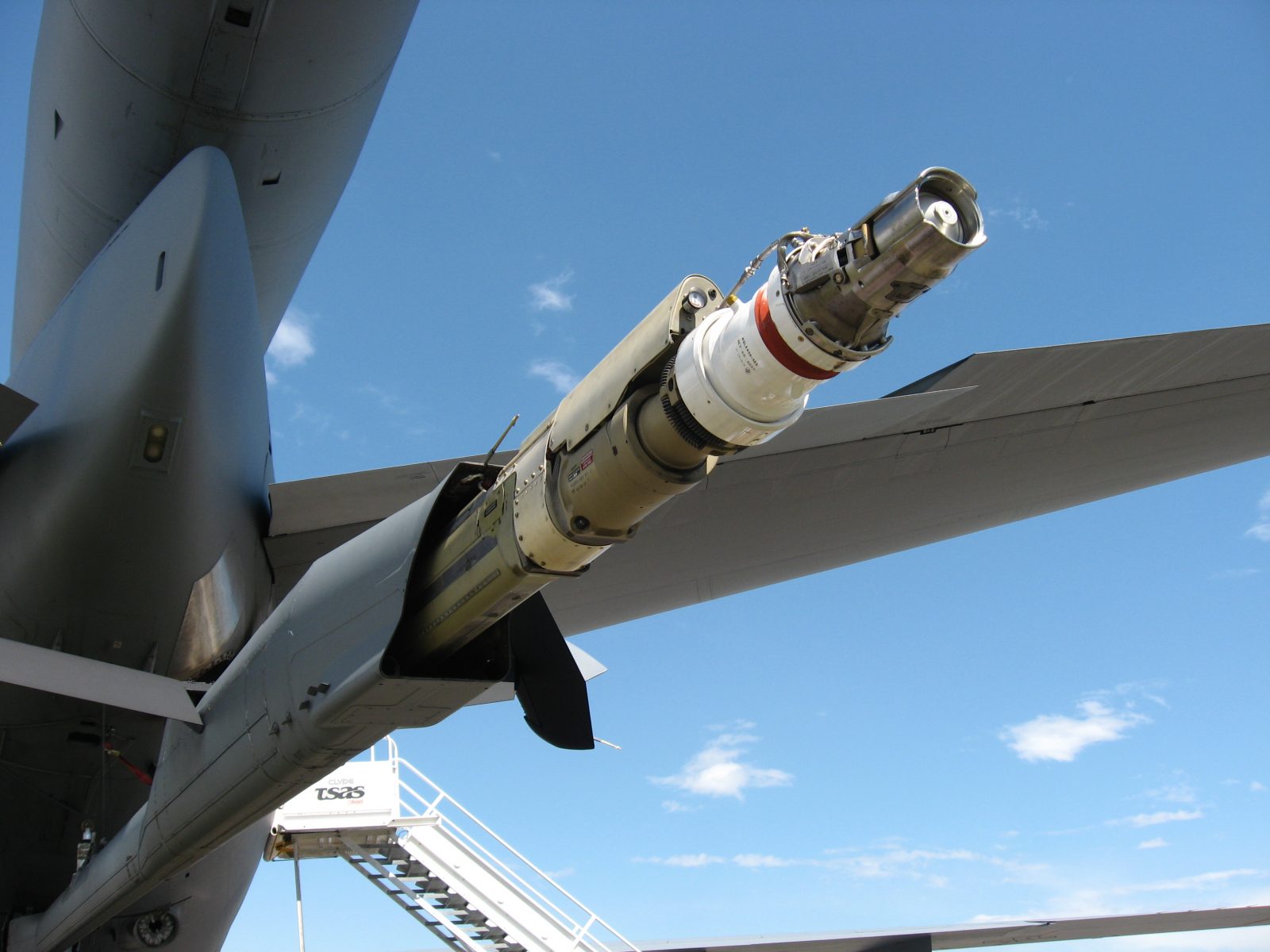
The refueling boom has the Hose-and-Drogue system that allows the McDonnell Douglas KC-10 Extender to refuel any of the US Aircraft or the allied ones without a need to alter its configuration or without a need to sue an adapter.
Powerplant and Specs
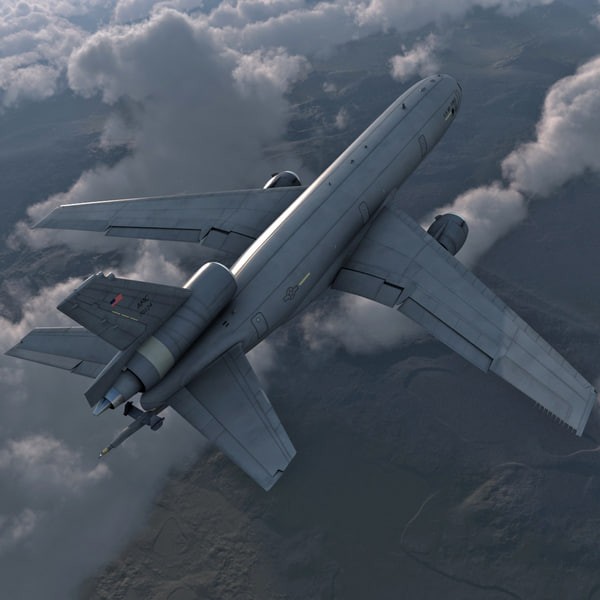
A single McDonnell Douglas KC-10 Extender is powered by 3 of the General Electric CF-6-50C2 turbofan engines; each of which creates a thrust of nearly 52500 lbs/ft. propelled by this much speed, the McDonnell Douglas KC-10 Extender then flies at a top speed of nearly 538 knots or about Mach 0.89 at a height of 11500 feet while having a maximum mission range of 4400 miles.

The aircraft has the ability to operate in almost any weather conditions and is operated by following 4 crewmembers.,
- An aircraft Commander
- Copilot
- Flight engineer
- Boom operator
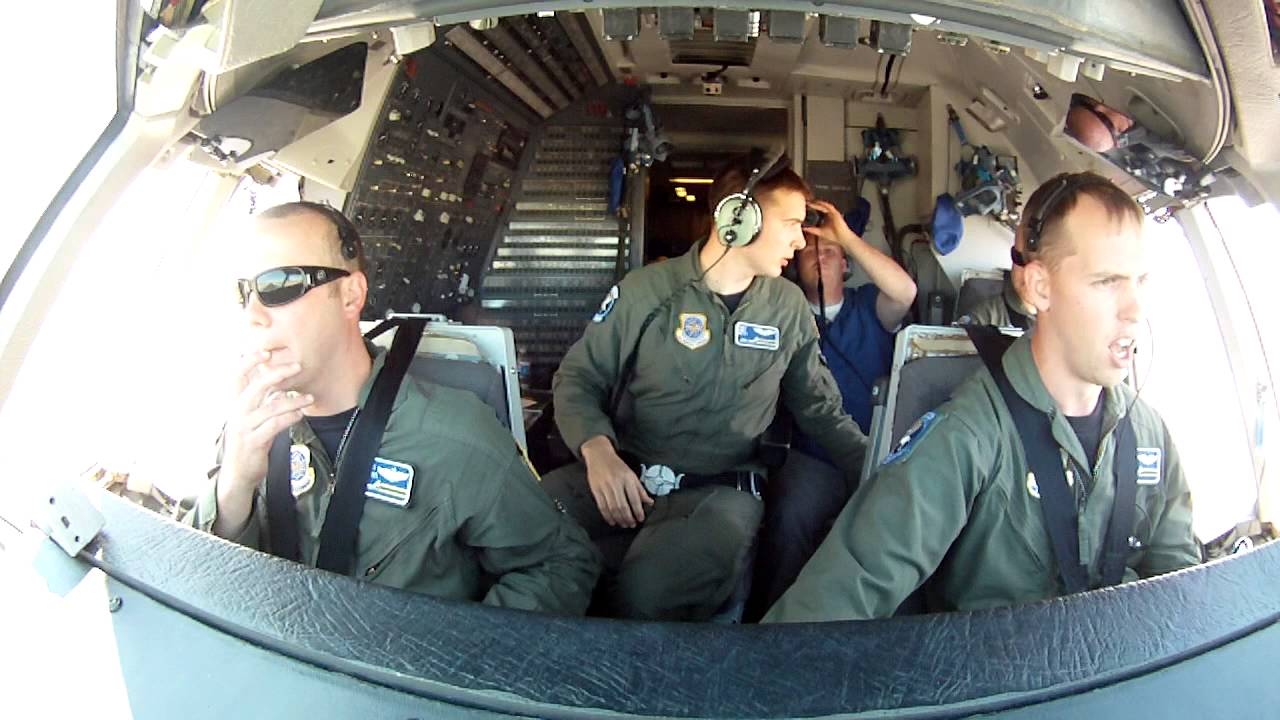
In case of cargo or medical missions, additional cargo handlers as well as medical staff can be added.
A secure place in military
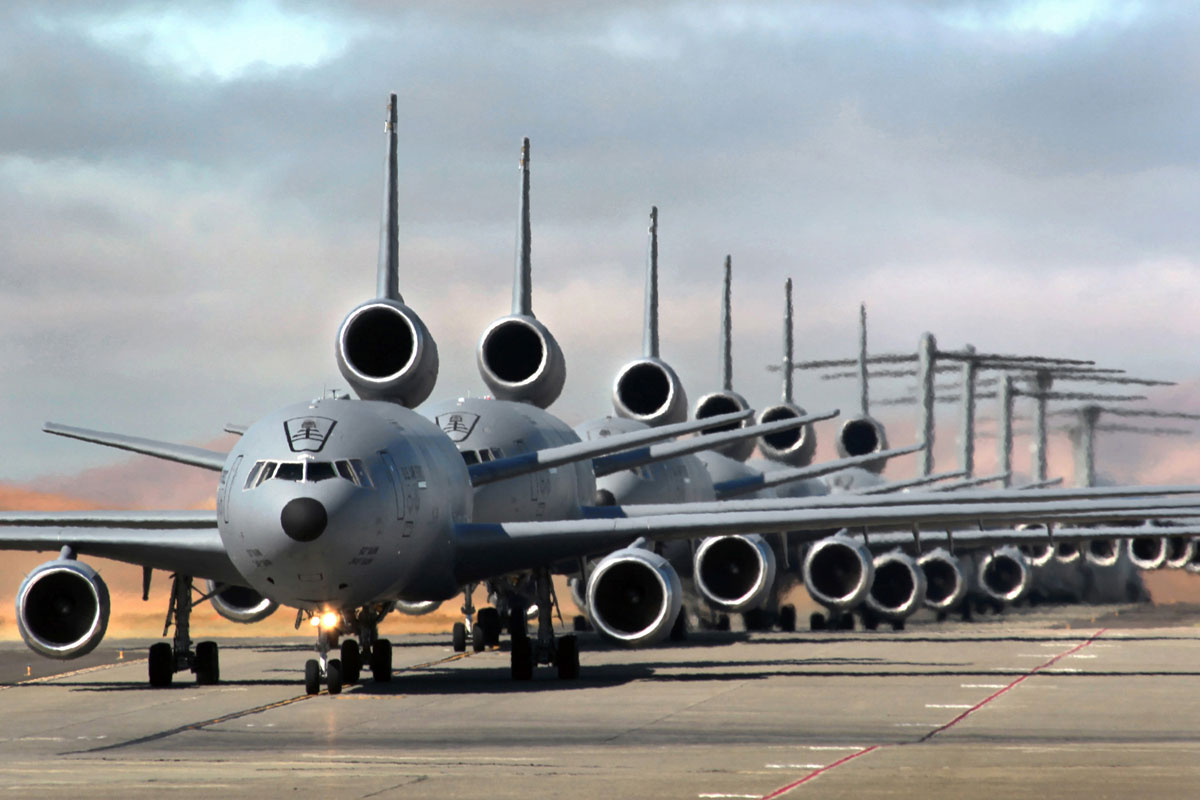
At the moment nearly 60 of the McDonnell Douglas KC-10 Extender are serving the US Air Force and the US Air Force Reserve. This aircraft is also in service of many US Allied nations such as 2 of them are already serving the Royal Netherlands Air Force. There are plans to replace the McDonnell Douglas KC-10 Extender with the more advanced Boeing KC-46 Pegasus but still KC-10 is an integral an crucial part of the US Army’s fleet of tanker aircraft. This is the reason the aircraft has been sanctioned to serve the army well until 2043.
Related Content
Interesting Facts About The Boeing P-8 Poseidon: The Maritime Patrol Aircraft
Amazing facts about the Boeing KC-135 Stratotanker; The Force Multiplier


